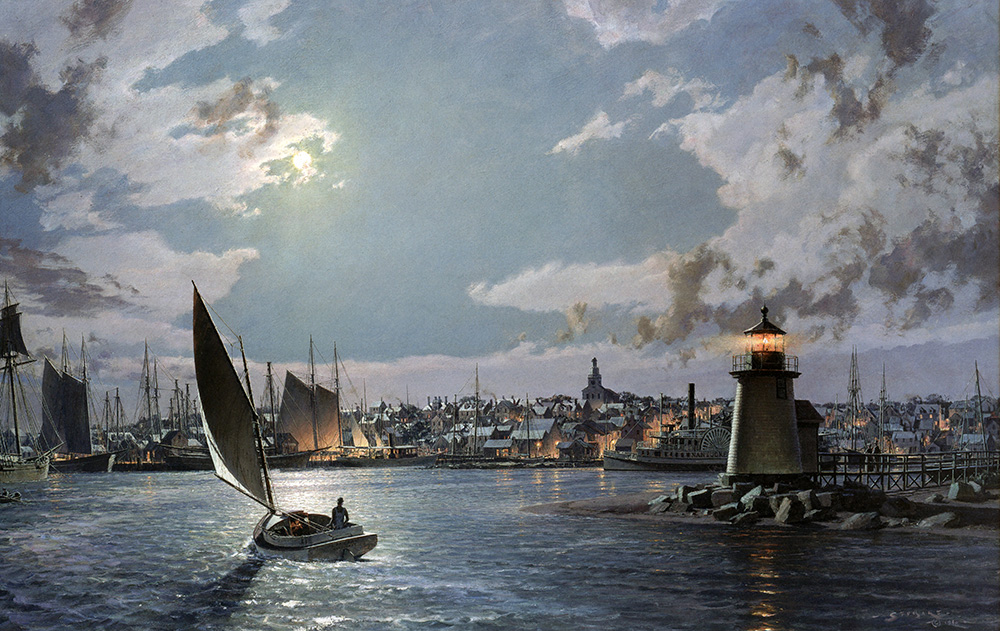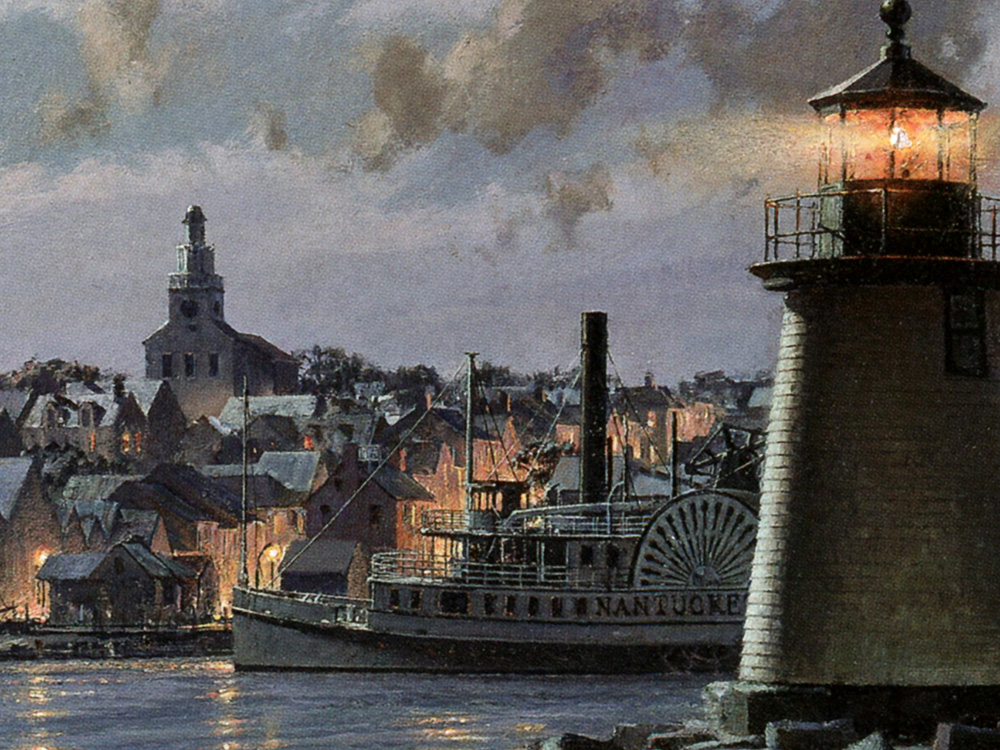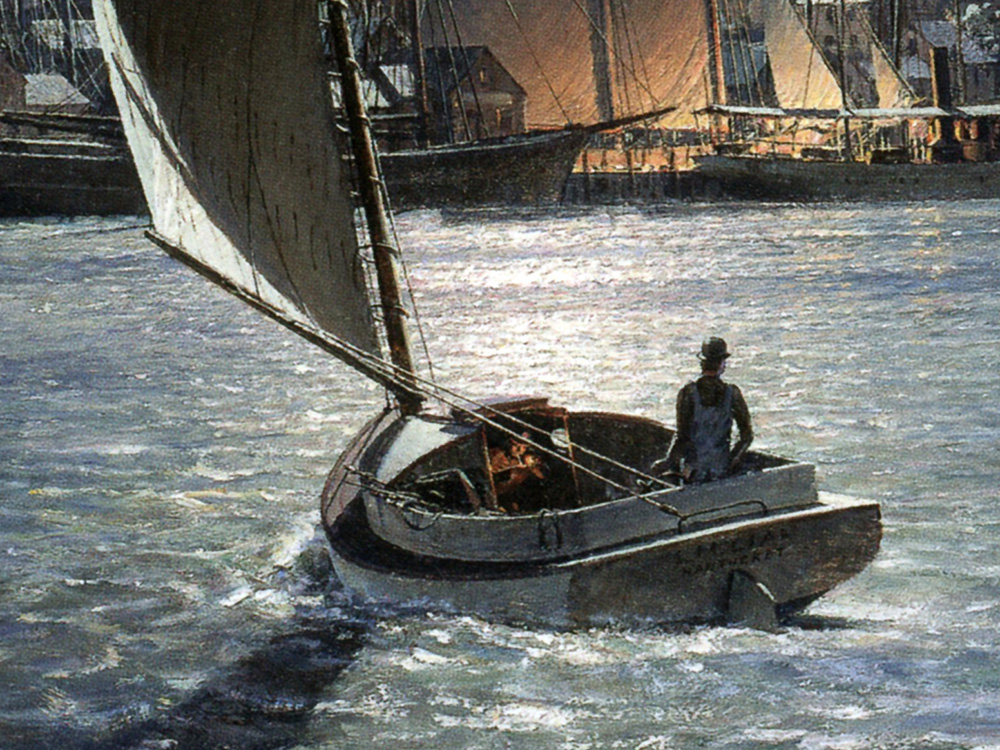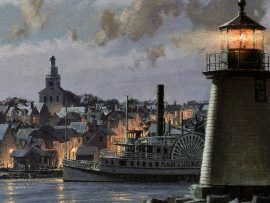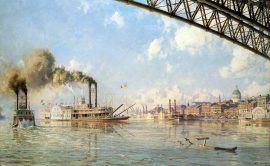Nantucket: The Island Port by Moonlight at the Turn of the Century
$1,000.00 Original price was: $1,000.00.$900.00Current price is: $900.00.
For its first two centuries, America's population clung to its coastal and navigable river shores because they were accessible by sail, the mode of transportation which joined the world together since time immemorial. Our offshore islands also belong in this community of the sea, which cast its character among them and created wharfside communities now antique and beautiful. Before deposits of oil were discovered in the ground, the fuel for lamps and lubrication came from the whale, and because of its location close by the whale's habitat, Nantucket would become America's capital of the whaling world, prospering until its shifting harbormouth sandbars caused so much disruption that an exodus of the industry to mainland New Bedford was the only solution.
In 1846 a fire started in a shop at the comer of Main and Union Streets (now the “Sport's Locker”) and quickly spread through the town's wooden buildings. By the time of, and following that tragedy it was said that “The mercantile clutter of whaling products and tall square ships was replaced by a relaxed serenity.” Nantucket's eventual prominence as a tourist Mecca had begun to develop as the last vestiges of the whaling industry faded away.
We see a tranquil scene. We observe vessels of fore and aft rig, silhouetted against a cool sky or illuminated by gaslight as sails are dried before being stowed away. These are comprised of schooner fishing trawlers and coal and lumber schooners serving the community's needs. The private steam yacht “Aquilo”, from New York, is visiting.
The island's steamboat service, the essential link to the mainland, was begun tenuously in 1818 with the eighty ton “Eagle,” although, like most all successors, it had short lived duration. But following the ravages of hard won and lost progress, the service, evident here, sports the handsome, six hundred ton, spacious and elegantly equipped “Nantucket” proudly transporting island devotees all the way from Woods Hole. She rests at her berth across the end of Steamboat Wharf for the night. Beyond her graceful profile are the gaslights of cobbled stoned Main Street in late evening.
As the key in this favored view, the very epitome of New England's inshore maritime heritage, the lowly catboat. Any scene of the region's turn of the century ports would surely be conspicuous by its absence!
A purely American creation, it was at this time that the catboat reached its highest perfection. Created sometime around 1840, the catboat's origins are lost in antiquity. But it was conceived as a safe, reliable and durable fishing or pleasure craft and is distinctly different in concept from others. The cove between Steamboat Wharf and Old North Wharf was a haven for the countless fishing or party models of this type clustering at its piers.
As night falls in the scene, a late arriving fishing catboat enters the quiet harbor as one of its crew lights up his pipe, backed into the cabin out of the breeze. As they head for the cove, with only the sound of ripples splashing against the hull, the harbor is still.
Out of stock
| Weight | 6.00 lbs |
|---|---|
| Catalog: | Stobart-097 |
| Artist: | John Stobart |
| Dimensions: | 19 1/2" x 32" |
| Edition: | 650 |

